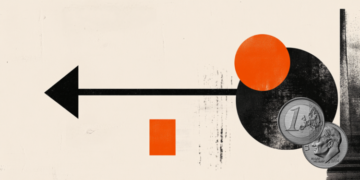- Gold price consolidates its gains to a one-month top touched earlier this Thursday.
- The emergence of some USD dip-buying and the risk-on mood caps the XAU/USD.
- Concerns about Trump’s trade tariff plans and Fed rate cut bets lend some support.
Gold price (XAU/USD) seesaws between tepid gains/minor losses through the early European session and consolidates its recent gains to over a one-month peak touched this Thursday. Growing acceptance that the Federal Reserve (Fed) will pause its rate-cutting cycle late this month assists the US Dollar (USD) to move away from a one-week low touched on Wednesday. This, along with the prevalent risk-on mood, turns out to be a key factors acting as a headwind for the safe-haven precious metal.
That said, signs of abating inflationary pressures in the US suggest that the Fed may not necessarily exclude the possibility of cutting rates further by the end of this year. This led to the overnight slump in the US Treasury bond yields, which might cap the USD and support the non-yielding Gold price. Moreover, uncertainties around Trump’s tariff plan and its potential impact on global growth should help limit the downside for the commodity as traders look to the US macro data for a fresh impetus.
Gold price struggles to attract follow-through buying amid mixed fundamental cues
- Bloomberg reported earlier this week that the incoming US President Donald Trump’s economic advisers are considering a program to gradually increase tariffs month by month.
- Moreover, cooler-than-expected inflation data from the US revived expectations that the Federal Reserve’s policy easing cycle may not be over yet and underpins the Gold price.
- The US Bureau of Labor Statistics (BLS) reported that the headline CPI rose 0.4% in December and the yearly rate accelerated to 2.9% from 2.7% recorded in the previous month.
- Meanwhile, the core gauge, which excludes volatile food and energy prices, rose 3.2% on a yearly basis as compared to the 3.3% increase in November and consensus estimates.
- The markets were quick to react and now expect the Fed to deliver 40 basis points (bps) rate cuts by year-end, compared with about 31 bps before the December inflation data.
- The yield on the benchmark 10-year US government bond retreated further away from the 14-month high touched on Monday, dragging the US Dollar to a fresh one-week low.
- Investors, however, seem convinced that the Fed will pause its rate-cutting cycle later this year, which helps revive the USD demand and caps the upside for the XAU/USD.
- Richmond Fed President Tom Barkin said that fresh inflation data show progress on lowering inflation to the central bank’s 2% goal, but added that rates should remain restrictive.
- Ukraine carried out its most massive attack, targeting military and oil facilities deep inside Russia, with drones and missiles, including US-made ATACMS ballistic missiles.
- In response, Russia launched its own bombardment, predominantly targeting Ukraine’s gas infrastructure and energy facilities with more than 40 missiles and 70 attack drones.
- Qatar’s Prime Minister said on Wednesday that Israel and Hamas agreed to a ceasefire in Gaza and exchange Israeli hostages for Palestinian prisoners after 15 months of war.
- Traders now look to the US economic docket – featuring monthly Retail Sales and the usual Weekly Initial Jobless Claims – for a fresh impetus later during the North American session.
Gold price technical setup supports prospects for a move towards $2,715-2,720 resistane
From a technical perspective, positive oscillators on the daily chart support prospects for a further move-up towards the $2,715-2,720 supply zone. Some follow-through buying should pave the way for additional gains towards the next relevant hurdle near the $2,748-2,750 region, above which the Gold price could aim to retest the all-time peak, around the $2,790 area touched in October 2024.
On the flip side, any meaningful pullback now seems to find decent support and attract fresh buyers around the $2,678 region. This should help limit the downside near the $2,664-2,663 horizontal zone. Failure to defend the said support levels could make the Gold price vulnerable to accelerate the fall towards the $2,635 area en route to the $2,615 confluence – comprising a short-term ascending trend line and the 100-day Exponential Moving Average (EMA).
Risk sentiment FAQs
In the world of financial jargon the two widely used terms “risk-on” and “risk off” refer to the level of risk that investors are willing to stomach during the period referenced. In a “risk-on” market, investors are optimistic about the future and more willing to buy risky assets. In a “risk-off” market investors start to ‘play it safe’ because they are worried about the future, and therefore buy less risky assets that are more certain of bringing a return, even if it is relatively modest.
Typically, during periods of “risk-on”, stock markets will rise, most commodities – except Gold – will also gain in value, since they benefit from a positive growth outlook. The currencies of nations that are heavy commodity exporters strengthen because of increased demand, and Cryptocurrencies rise. In a “risk-off” market, Bonds go up – especially major government Bonds – Gold shines, and safe-haven currencies such as the Japanese Yen, Swiss Franc and US Dollar all benefit.
The Australian Dollar (AUD), the Canadian Dollar (CAD), the New Zealand Dollar (NZD) and minor FX like the Ruble (RUB) and the South African Rand (ZAR), all tend to rise in markets that are “risk-on”. This is because the economies of these currencies are heavily reliant on commodity exports for growth, and commodities tend to rise in price during risk-on periods. This is because investors foresee greater demand for raw materials in the future due to heightened economic activity.
The major currencies that tend to rise during periods of “risk-off” are the US Dollar (USD), the Japanese Yen (JPY) and the Swiss Franc (CHF). The US Dollar, because it is the world’s reserve currency, and because in times of crisis investors buy US government debt, which is seen as safe because the largest economy in the world is unlikely to default. The Yen, from increased demand for Japanese government bonds, because a high proportion are held by domestic investors who are unlikely to dump them – even in a crisis. The Swiss Franc, because strict Swiss banking laws offer investors enhanced capital protection.
Read the full article here








